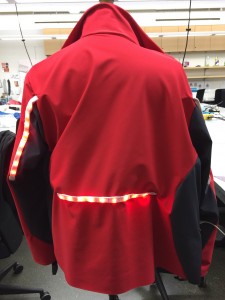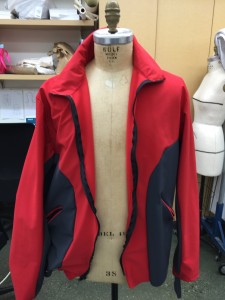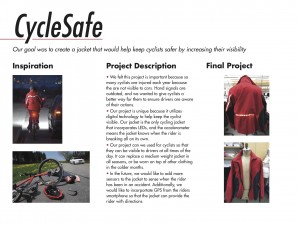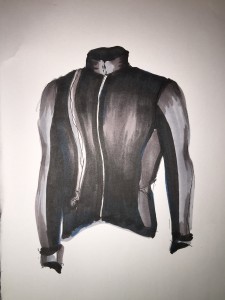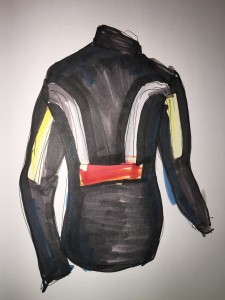Team Members: Andrew and Emma
What We’re Going To Do: We’re developing a cycling jacket that incorporates sensors and LEDs as brake lights and turn signals to eliminate the need for hand signals. Additional features may include pressure sensors to contact emergency services in case of an impact, and vibrators to provide directions.
Concept Art:
Inspiration: We felt that hand signals made by cyclists are not always clear or visible to drivers. Wearing this jacket could greatly improve the safety of cyclists.
Materials and Costs:
Fabric, Zippers, Velcro, Elastic, Seam Tape. Estimated cost: $90
LEDs, Accelerometer, Battery, Arduino. Estimated cost: $150
Steps/Timeline: We just ordered sample fabrics last week so we’re hoping they come in soon and will have a final fabric picked and ordered by next week. The technology has also been ordered. We hope to have a final muslin sample of the jacket completed by November 18th. The remaining time will be dedicated to completing the final jacket and testing.
Backup/Fallback: We are hoping to allow ourselves enough time for troubleshooting so that we will not need a backup/fallback plan. If this doesn’t happen to work we will create something less intensive than a full jacket and something that would be more like encased wire that you can put on over whatever you’re wearing (similar to what Jess suggested last week).
